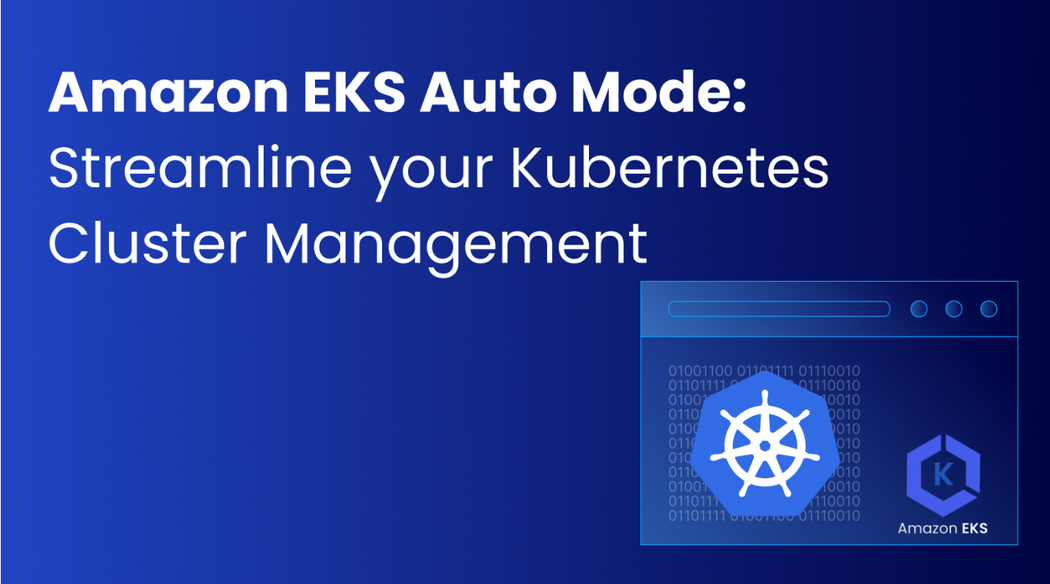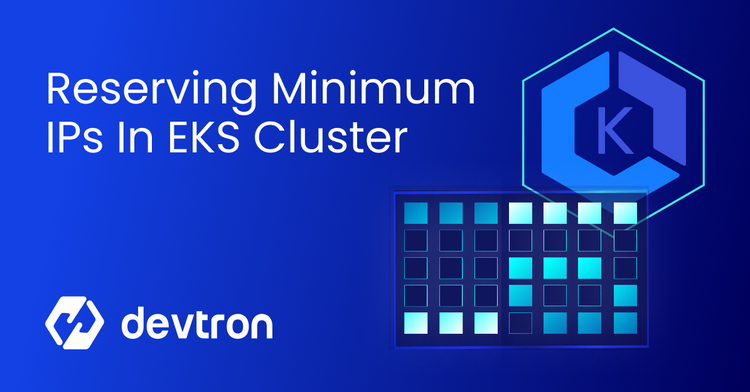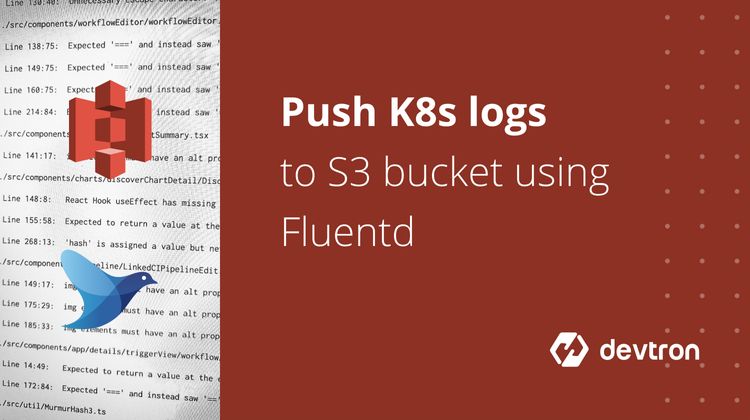1. Amazon EKS Auto Mode automates Kubernetes infrastructure management—covering compute, networking, and storage—removing the need for manual provisioning.
2. It supports dynamic resource scaling, automated upgrades, and continuous cost optimization to ensure efficiency and security.
3. Ideal for production workloads, AI/ML applications, and dynamic scaling environments, enabling faster innovation.
4. Compared to traditional EKS, Auto Mode reduces operational overhead by handling nodes, OS updates, service discovery, and lifecycle management automatically.
5. When combined with Devtron’s GitOps-enabled CI/CD pipelines, EKS Auto Mode delivers an end-to-end streamlined Kubernetes experience.
Introduction
At the AWS re: Invent, AWS announced EKS Auto Mode for their Amazon Elastic Kubernetes Service (Amazon EKS), a capability for existing Elastic Kubernetes Service (EKS) that now automates the Kubernetes cluster management for computing, storage, and networking. Now with the EKS Auto Mode, users can offload the overhead work of provisioning and managing infrastructure for their production-grade Kubernetes cluster to AWS.
With features like automatic infrastructure provisioning, optimal instance selection, dynamic scaling, and continuous cost optimization, EKS Auto Mode reduces operational overhead and enhances application performance. When paired with Devtron's CI/CD pipelines, you can further streamline deployments, boost developer productivity, and focus more on innovation rather than infrastructure management.
In this blog, we will take a look at what EKS Auto Mode is, its key features, and how users can benefit from this new AWS offering.
What is EKS Auto Mode?
Amazon EKS Auto Mode is a recently announced feature of Amazon Elastic Kubernetes Service (EKS) that fully automates Kubernetes infrastructure management. It provisions, scales, and optimizes resources, including EC2 nodes, networking, and storage, without requiring manual intervention.
When you enable EKS Auto Mode on a new or existing cluster, AWS automatically deploys essential controllers to handle compute, networking, and storage alongside the managed control plane.
Key benefits include:
- Automatic scaling of workloads and GPU nodes for AI/ML pipelines.
- Cost-aware resource provisioning to optimize budgets.
- OS patching and security hardening by default.
- Continuous cluster upgrades with minimal disruption.
This makes EKS Auto Mode especially useful for teams that want to accelerate Kubernetes deployments while avoiding the complexities of cluster administration.
Why EKS Auto Mode?
Traditionally, EKS managed only the control plane (API server, etcd). Developers and operators were still responsible for:
- Worker nodes (EC2 instances)
- Networking configurations
- Load balancing and ingress
- Add-ons and upgrades
This added significant operational complexity.
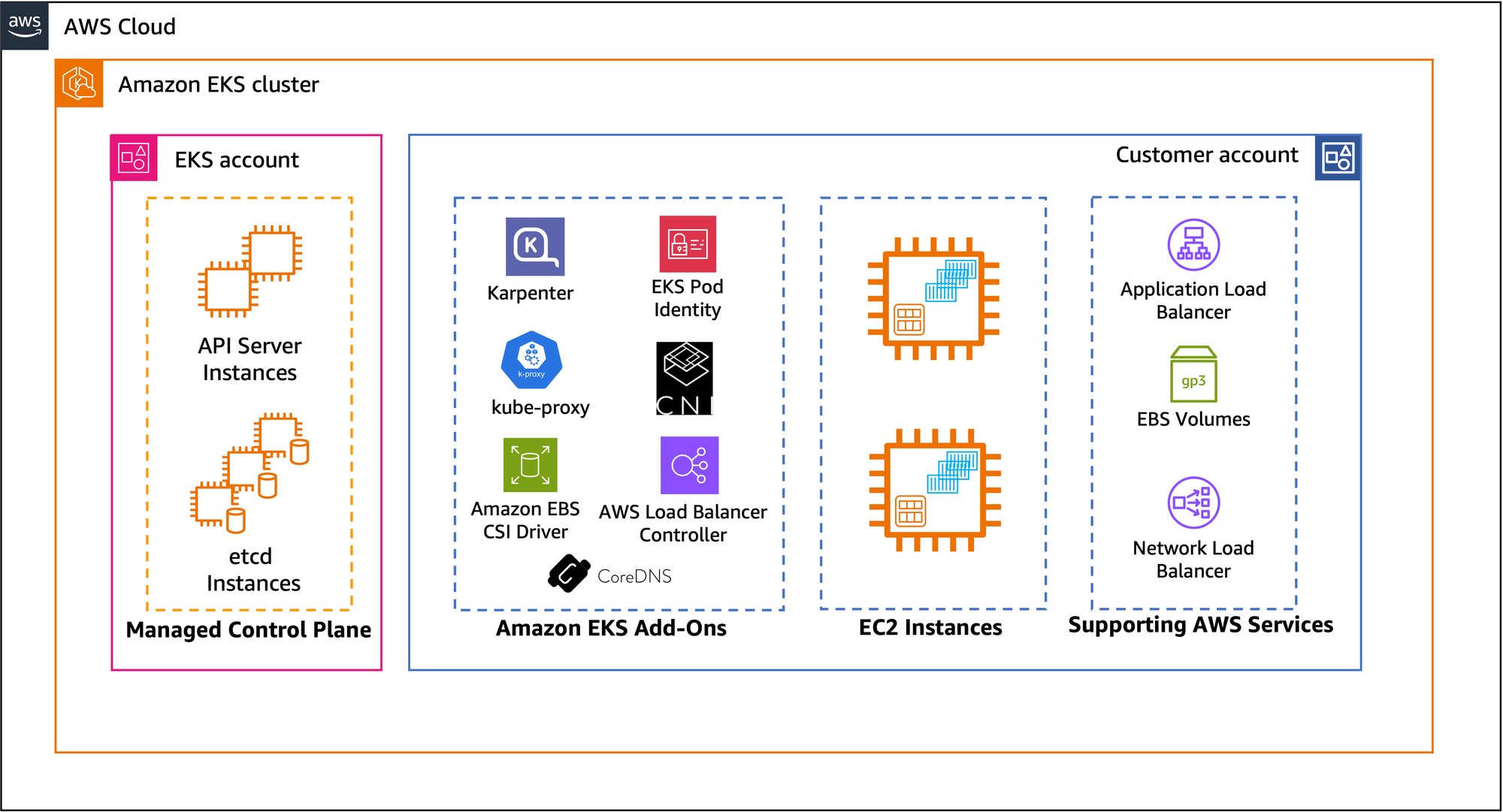
In the EKS Auto Mode, AWS takes a step forward and, along with the Managed Control Plane, EKS takes control of Storage, Compute, Load Balancing, and EC2-managed Instances. The EKS Auto Mode also allows the node to run as system processes managed by AWS. This includes elements like service discovery, service load balancing, pod networking, block storage, and credential vending. For the regular updates and to maintain the security posture, AWS EKS Auto Mode takes the lifecycle management by providing updates to all components. Moreover, EKS Auto Mode handles cluster upgrades and OS updates automatically by gracefully replacing nodes.
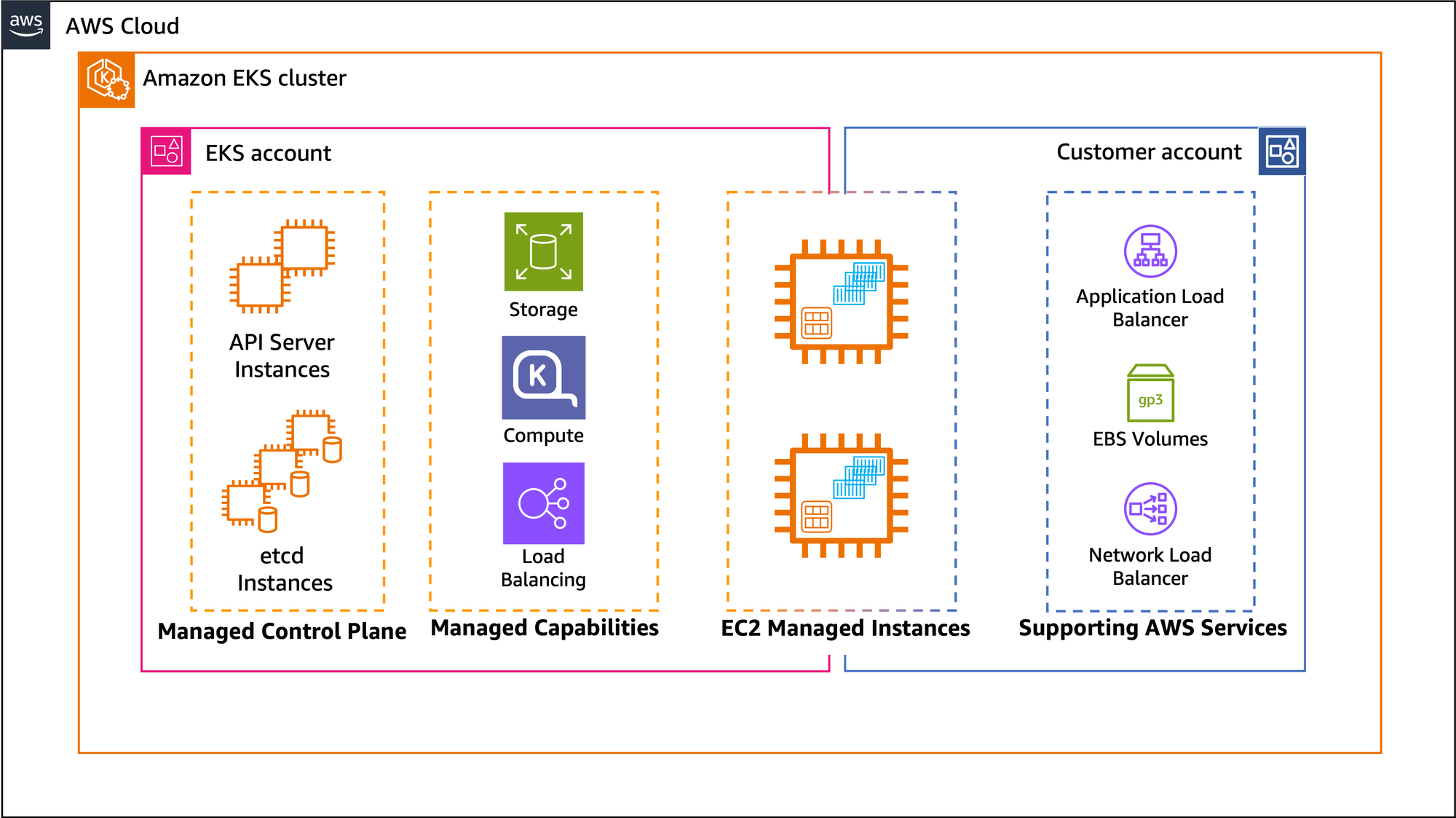
By automating these infrastructure elements management tasks, AWS reduces the operational overhead faced by engineers and developers, enabling them to focus more on application development rather than infrastructure complexities.
So the reasons for using EKS Auto Mode can be:
- Offloading Cluster Operations
- Improve Performance, Availability, and Security of Applications
- Continuously Optimize Compute Cost
Features of EKS Auto Mode
1. Streamlined Cluster Management
Automatically provisions production-ready clusters, reducing manual operations. Ideal for teams with limited Kubernetes expertise.
2. Dynamic Resource Scaling
Scales nodes and GPU instances on demand for real-time workloads such as AI/ML, big data, and microservices.
3. Cost Efficiency
Eliminates idle resources, optimizes compute utilization, and balances workloads across nodes to reduce cloud bills.
4. Security Enhancements
- Uses hardened using
- Replaces nodes every 21 days (configurable) to prevent drift
5. Automated Upgrades
Handles control plane, node, and add-on upgrades with respect to Pod Disruption Budgets (PDBs) for minimal downtime.
6. Managed Core Components
Pre-integrated features include:
- Pod IP allocation and networking policies
- EBS CSI storage
- DNS and health checkers
- GPU plug-ins
7. Customizable NodePools and NodeClasses
- Create workload-specific pools (e.g., GPU-heavy vs. memory-heavy)
- Isolate workloads for security or cost control
Simplify Kubernetes Deployment with Devtron
While AWS EKS Auto Mode simplifies cluster infrastructure management, deploying and managing applications still requires a robust developer platform.
This is where Devtron comes in:
- Unified CI/CD Pipelines → GitOps-driven deployments with vulnerability scanning and policy enforcement
- Multi-Cluster Management → Deploy applications consistently across EKS and other Kubernetes clusters
- Day-2 Operations → Automated rollbacks, monitoring, debugging, and upgrades from one dashboard
- Security → Built-in RBAC, policy-driven deployments, and vulnerability scanning
- Developer Productivity → One-click deployments, self-service environments, and faster feedback loops
Conclusion
Amazon EKS Auto Mode is a breakthrough in Kubernetes automation, taking away the pain of managing compute, networking, and storage infrastructure. It ensures scalability, cost efficiency, and security, while freeing engineers from repetitive cluster operations.
However, running applications at scale still needs a developer-friendly platform. Devtron closes that gap with integrated CI/CD pipelines, GitOps workflows, and Day-2 operations, enabling teams to ship faster and safer.
Together, EKS Auto Mode + Devtron create an end-to-end Kubernetes solution for modern workloads.


